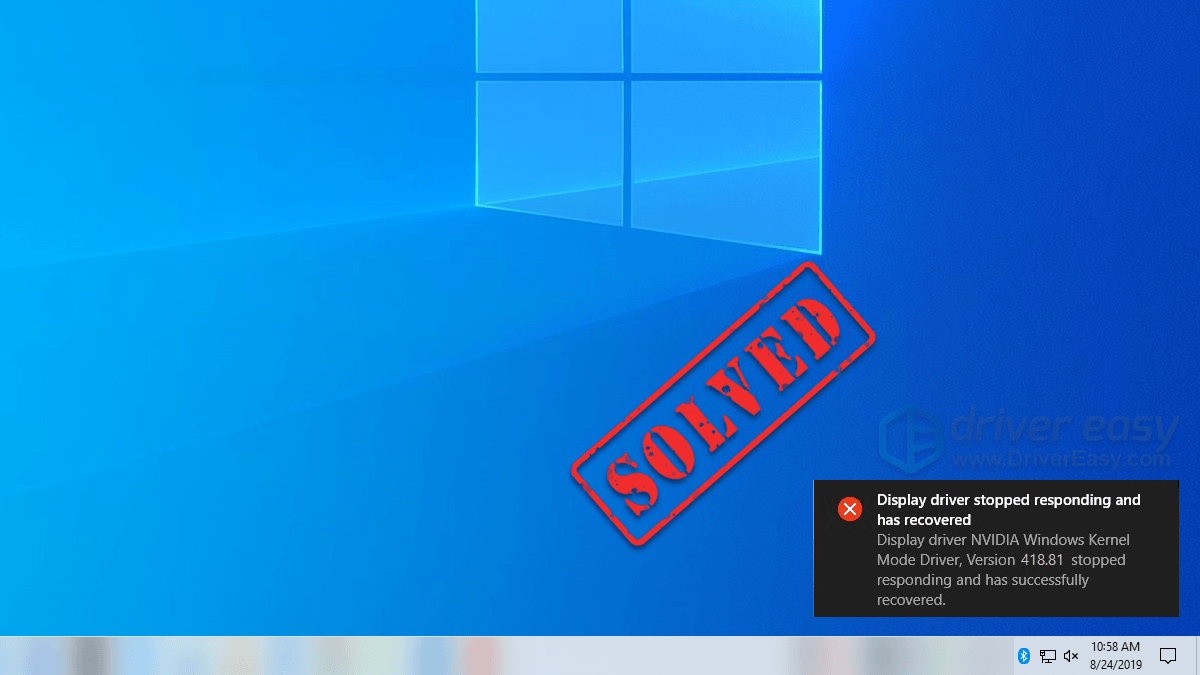If you’re seeing the error message like “Display driver NVIDIA Windows Kernel Mode Driver, Version xxx.xx stopped responding and has successfully recovered”, you’re not alone!
Although it’s incredibly frustrating, you’re definitely not the only person to experience the Nvidia kernel mode driver crash issue. Thousands of NVIDIA card users have recently reported the very same issue. More importantly, you should be able to fix it pretty easily…
Try these fix:
Here’s a list of fixes that have resolved this problem for other NVIDIA graphics card users. You don’t have to try them all. Just work your way through the list until you find the one that does the trick for you.
- Update your drivers
- Perform a Windows update
- Adjust your Windows system for the best performance
- Modify the Registry
Fix 1: Update your drivers
This error message may appears when your graphics driver is outdated or corrupted. In this case, you can fix this issue quickly by updating your graphics driver.
There are two ways you can get the right drivers for your graphics driver: manually or automatically.
Manual driver update – You can update your graphics drivers manually by going to NVIDIA official website and searching for the most recent correct driver. Be sure to choose only drivers that are compatible with your Windows version.
Automatic driver update – If you don’t have the time, patience or computer skills to update your video and monitor drivers manually, you can, instead, do it automatically with Driver Easy.
Driver Easy will automatically recognize your system and find the correct drivers for your exact graphics cards, and your Windows version, and it will download and install them correctly:
- Download and install Driver Easy.
- Run Driver Easy and click Scan Now. Driver Easy will then scan your computer and detect any problem drivers.

- Click Update All to automatically download and install the correct version of all the drivers that are missing or out of date on your system. You need the Pro version of Driver Easy to do this, so you’ll be prompted to upgrade.
Don’t worry; it comes with a 30-day money-back guarantee, so if you don’t like it you can get a full refund, no questions asked.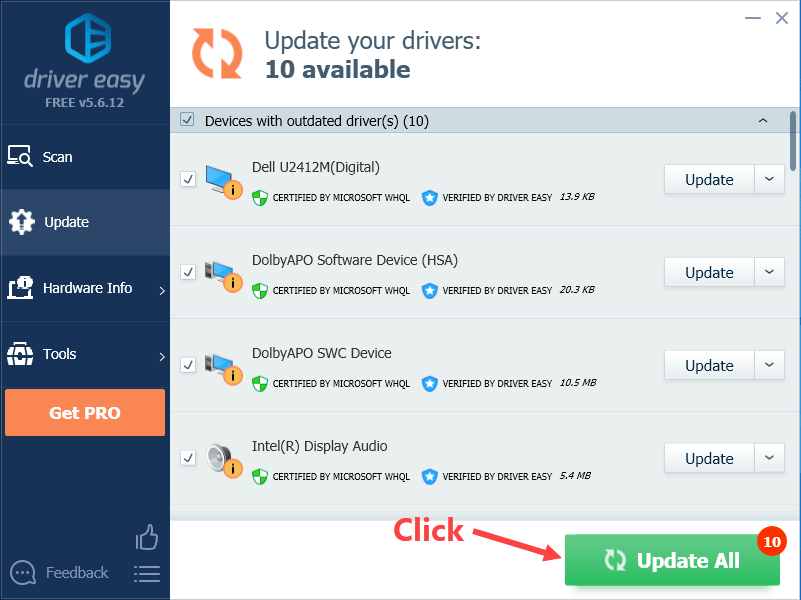
(Alternatively if you’re comfortable manually installing drivers, you can click ‘Update’ next to each flagged device in the free version to automatically download the correct driver. Once it’s downloaded, you can manually install it.)
Fix 2: Perform a Windows update
If this issue persists after you installed the latest graphics driver, you may also need to install the latest Windows updates. Here is how to do it:
- On your keyboard, press the Windows logo key and I at the same time to open Windows Settings. Then click Update & Security.
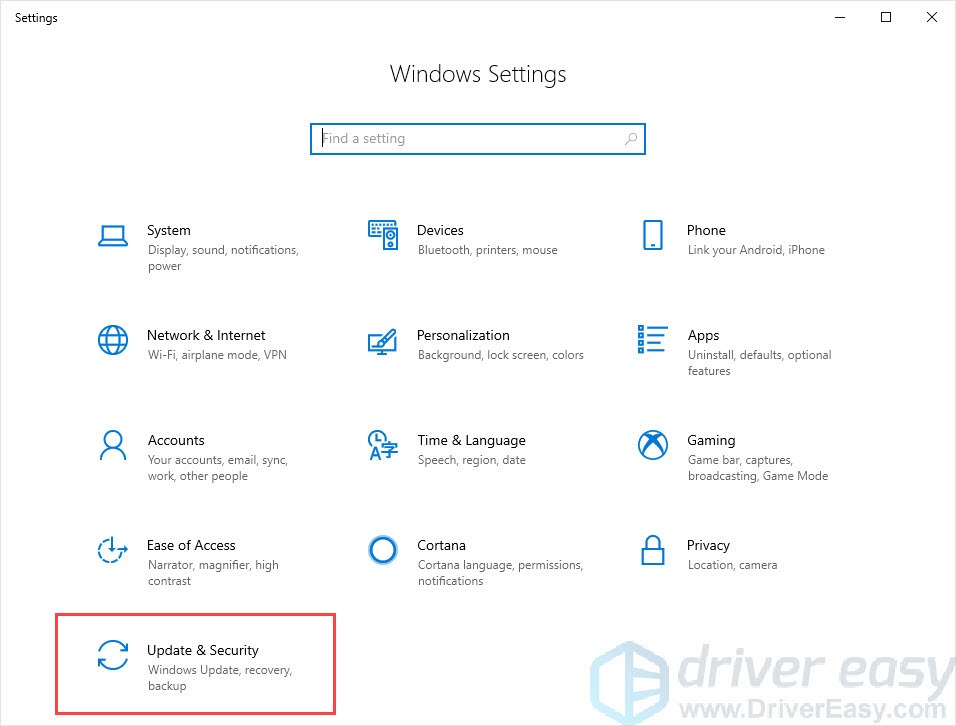
- Click Check for updates. Windows will start searching for available updates. If there are updates available, Windows will automatically download and install the updates.

See if this error message reappear after you installed the latest Windows updates. If this issue persists, try the next fix, below.
Fix 3: Adjust your Windows system for the best performance
Some users reported that this issue can be fixed by adjusting Windows system for the best performance. To try it out, you can follow the steps below:
- On your keyboard, press the Windows logo key and R at the same time to open the Run dialog. Type control sysdm.cpl and press Enter to open the System Properties window.
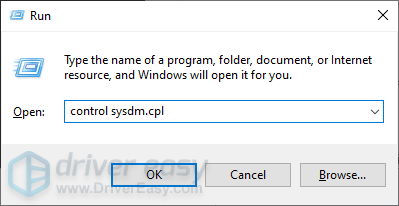
- In the pop-up window, navigate to the Advanced tab, then click Settings… in the Performance section.
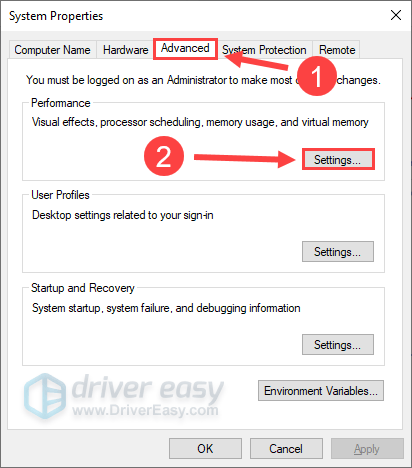
- Select Adjust for best performance and click OK.
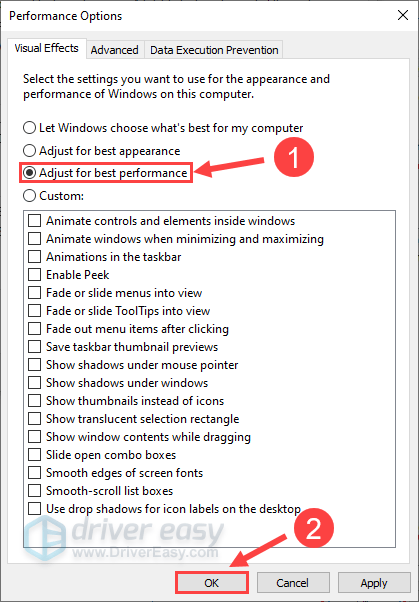
If this fix didn’t work for you, try the next fix, below.
Fix 4: Modify the Registry
If none of the fix, try modifying your graphics card settings to see if you can fix this issue. Here is how to do it:
- On your keyboard, press the Windows logo key and R at the same time to invoke the Run dialog. Type regedit and press Enter to open Registry Editor. You’ll be prompted for permission. Click Yes to continue.

- In Registry Editor, navigate to the following location: HKEY_LOCAL_MACHINE\SYSTEM\CurrentControlSet\Control\GraphicsDrivers. Then right-click on the GraphicsDriver folder, and select New > DWORD (32-bit) Value.

- Name this DWORD as TdrDelay. Then double-click on it and change the Value data to 8. Click OK to save the change.
(Note: This modification allows the GPU 8 seconds to respond instead of default 2 seconds.)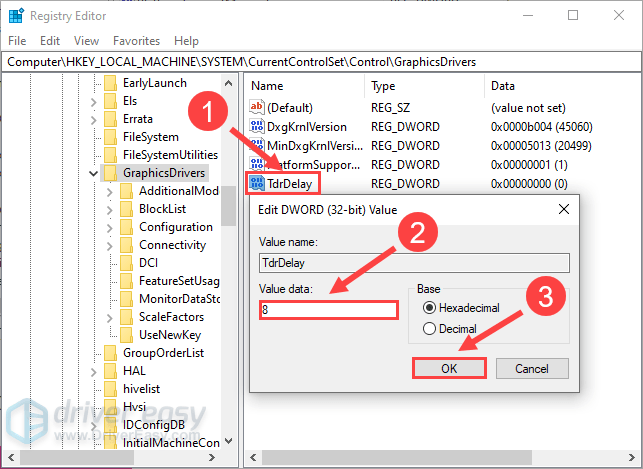
- Restart your PC.
See if the nvidia kernel mode driver crash issue persists after you restarted your PC. If not, congratulations! You’ve fixed this issue.
Hopefully this post helped you fix the nvidia kernel mode driver crash issue. If you have any questions or suggestions, you’re more than welcome to leave us a comment below. Thanks for reading!






